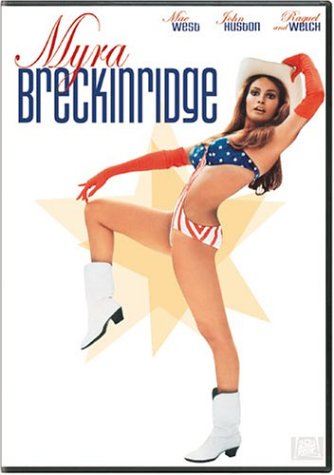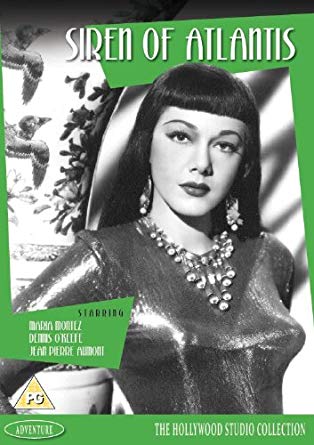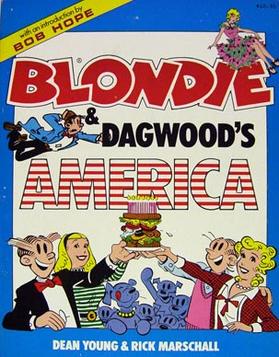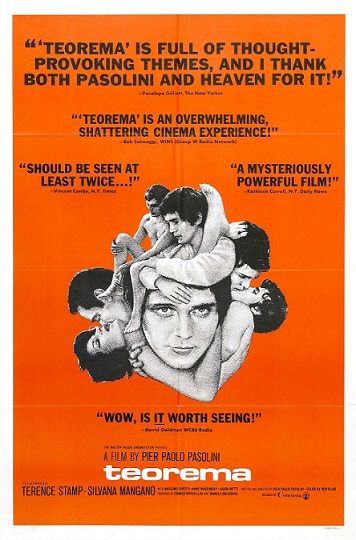 As Afghanistan enters its last dreadful lap, much like Vietnam circa 1970, I have been looking back to what fiction from those ‘golden days’ had to say, when students were alive with antiwar politics and sexual revolution, the empire at its peak of power and savagery. The parallels are bleak, and very, very enlightening.
As Afghanistan enters its last dreadful lap, much like Vietnam circa 1970, I have been looking back to what fiction from those ‘golden days’ had to say, when students were alive with antiwar politics and sexual revolution, the empire at its peak of power and savagery. The parallels are bleak, and very, very enlightening.
In Norman Mailer’s Why Are We in Vietnam? (1967), the rich Texan D.J.’s son spends the night in a tent with his best friend. They feel lust for the other, but intuit that the only response to such desire is violence; they will never be lovers, but only ‘killer brothers’.
They (and their fathers) worship their high-powered guns. They revel in shooting an exquisite fox, standing nobly at dawn, a magnificent grizzly, wounded and running crazily in pain. The atmosphere is full of cruel violence against the natural order and lack of understanding of reality. Then, in the final sentence, ‘off to Vietnam we go.’ Argh.
It was then that I turned to Gore Vidal’s Myra Breckinridge (1968) and Myron (1974).
Unlike Mailer, Vidal’s opus is defiantly queer (‘there are only homosexual acts’), taking Mailer’s sexual tension to the breaking point, emphasizing the overpowering influence of advertising in dumbing down and homogenizing society, pointing to a quixotic solution to America’s post-WWII angst.
Who needs testosterone?
Vidal uses the Dr.Jekyll/ Mr Hyde archetype, the split between the two warring natures, in this case the wimpy male Myron film critic, and aggressive female Myra Hollywood star.
Myron/ Myra takes revenge against the normal, aggressive male archetype as outmoded. The world doesn’t need aggressive males anymore.
My mission: the destruction of the last vestigial traces of traditional manhood in the race in order to realign the sexes, thus reducing population while increasing human happiness and preparing humanity for its next stage.
Subdue the aggressive male nature to fit the techno-world which no longer can rely on mass starvation and large-scale wars to control the population size. Better yet, get rid of testosterone altogether.
Both Mailer and Vidal, in their own ways, come to the same conclusion: American worship of violence, a groundless idolization of male aggression, is the problem.
The remarkable rise in the militant transgender movement today can point to Myra as a precursor, but a two-edged one. Though s/he is a transwoman (a post-Vidal neologism) herself, she sees no need for ‘Gay Lib’, or ‘Trans Lib’. Rather, use this marginalism as a conspiracy against all of society. A kind of ‘Protocols of the Elders of Myra’ against what is now dubbed heteropatriarchy.
In a nutshell: wimpy repressed gay film critic Myron’s alter ego is Myra, a superwoman, combining male aggression, strength and rationality with feminine wiles and beauty, but without emotion. This requires castration to free Myra from irrational male sexuality, leaving her free to control/ manipulate all men and women in the era of Woman Triumphant.
Though Myra is Myron’s Mr Hyde, only taking over his physical body from time to time, s/he is able to bring her conspiracy to life in Steve Dude, a Hollywood rising hunk, who she convinces to have a sex change, becoming Stephanie Dud, Myra’s avatar, who at the end of Myron, has entered US politics, risen to governor of Arizona, and is in line to be the next (Republican) president of the US. Woman Triumphant conquers the world.
What bothers Myra about gays (we can add ‘and transgenders’) is the narcissism:
The make-up artist Maude wears eyeliner and is a fag, an element I do not mind when they keep to themselves and do not prey on minors or solicit straight people like yours truly. Or hold these parades down Hollywood Boulevard and talk about Gay Lib.
Where is old-fashioned public decorum? To the end, Vidal bemoaned that “the love that dares not speak its name has become the love that won’t shut up.”*
Vidal wrote these two novels, bookends to the ‘heroic’ era of gaylib (1968--73), the final surrender to the social and economic forces responsible for the emasculinization of the male in the West. Myra and the failed (but now cult) eponymous 1970 film, make you squirm, but are still compelling.
They accept (through the voice of Myra) “Freud’s tentative conviction” that everyone is bisexual, that only if a person is fanatical do they choose to be straight. But with the corollary that gay men are second-rate men, that a transwoman is the logical culmination of ‘Gay Lib’, as s/he can better satisfy the 95% of men (who are the only really desirable ones), and that s/he should just blend in, dissolve seamlessly into society.
It’s hardly a glorious future, more a warning of creeping hetero-dystopia. Vidal’s (let alone Mailer’s) is not a politically correct way of viewing things, but a devastating statement of the logic of feminism and gaylib.
Back to the future
Vidal’s Cassandra voice is uncanny, foreshadowing today’s transgender and MeToo movements, the rise of Trump, the impending defeat of the US in Vietnam (sorry, Afghanistan).
In chapter 9, Myra bemoans,
Like it or not, we are living in a post-Gutenberg and pre-Apocalypse world. … In the Forties, American boys created a world empire because they chose to be James Stewart, Clark Gable and William Eythe. By imitating godlike autonomous men, our boys were able to defeat Hitler, Mussolini and Tojo. Could we do it again? No. At best, there is James Bond. Glory has fled and only the television commercials exist to remind us of the Republic’s early greatness and virile youth.
There has always been queer culture, but in the shadows, which Vidal argues, is where it belongs. In his Palimpsest: A Memoir (1995), Vidal recalls the Astor Bar in Times Square, where
soldiers, sailors, and marines were on the prowl for one another; few civilians, and no woman, ever dared intrude on these male mysteries. We had won the great imperial war, and thanks to us, the whole world was briefly American. In the war, just about everyone, either actively or passively, was available under the right circumstances. Traditional hysteria about same-sexuality ran its usual course in the well-policed army camps Stateside (to categorize is to control), but bars like the one on the ground floor of the Astor Hotel throve. … I was interviewed there by Kinsey, who was intrigued by my lack of sexual guilt. I told him that it was probably a matter of class ... a middle-class disorder from which power people seem exempt. We did whatever we wanted to do and thought nothing of it.
The rise of gaylib from the late 1960s just made official the new, more promiscuous morality. Which is to say, no morality. No need for ‘male mysteries’.
 Myra declares that henceforth it will be ‘before Myra’ and ‘after Myra’, the turning point being 1948, the filming of Siren of Baghdad. The dawn of the age of Woman Triumphant.
Myra declares that henceforth it will be ‘before Myra’ and ‘after Myra’, the turning point being 1948, the filming of Siren of Baghdad. The dawn of the age of Woman Triumphant.
Norman Mailer, legendary as the male chauvinist fighting to preserve the vestiges of masculinity, however distorted, plays a starring role in Myron. Vidal is amused by his flailing, and parodies Mailer, modelling the lecherous Whittaker Kaiser on him. Whittaker explains to Myra:
Every man wants to make it with another man but the real man is the one who fights this hideous weak fag self … because the good fuck makes the good baby.
Blondie
This pre/post-Myra cultural transition parallels the transition of Chic Young’s Blondie from 1930s helpless, submissive female to the 1950s  smart, resourceful, subtly domineering woman, her wimpy husband Dagwood, a bumbling (but nice) clown, an man-boy, as shown by recurring themes:
smart, resourceful, subtly domineering woman, her wimpy husband Dagwood, a bumbling (but nice) clown, an man-boy, as shown by recurring themes:
*Dagwood and Herb Woodley spending some weekend time together, which usually escalates into a brawl.
*Dagwood demanding a raise from Dithers and failing to get it every time.
*Dagwood caught goofing off or sleeping at his desk in the office.
This popular-culture hermeneutics inspired McLuhan’s early writing, culminating in The Gutenberg Galaxy (1962). He despised the modern technological world, the linear, individualistic Gutenberg man, television (now internet) -- electronic media as extensions of the human nervous system.
Social progress = regress
This is turning our civilization back into an oral one, ruled by the image, retribalized via our freedom to bypass time and space through print and image-driven media. If it were a global tribalism (global village), it might actually lead to world peace, but it is a degenerate tribalism, with Zionism and other altright nationalisms now sweeping the West, leading to ceaseless wars.
McLuhan focused on Blondie, which he argued glorified “pansified manhood”. Like Vidal, McLuhan said that already in the 1950s, homosexuality was “rampant in the new age, the result of Blondie's emasculating Dagwood in front of Cookie and Alexander, their children,” and by his authoritarian boss Mr. Dithers . As such, homosexuality was “probably the chief threat to contemporary morality.”**
 50 years after Vidal wrote his satire, 60 years after McLuhan, we still have James Bond and copycat spy/ police melodramas, but the blockbuster films now are of teen fantasy heroes, MarvelComics, the ersatz medieval Game of Thrones. Plus the Hurt Locker guilt-angst cries of a broken empire. The post-Myra age.
50 years after Vidal wrote his satire, 60 years after McLuhan, we still have James Bond and copycat spy/ police melodramas, but the blockbuster films now are of teen fantasy heroes, MarvelComics, the ersatz medieval Game of Thrones. Plus the Hurt Locker guilt-angst cries of a broken empire. The post-Myra age.
As he was writing The Mechanical Bride (1951), McLuhan surely saw the McCarthyist gay witch hunt as the last-gasp defence of traditional American morality, a last-minute finger in the dyke. The next stage in the emasculinization of American male being gaylib.
Queer fascism
It is also self-parody, as the world Vidal depicts is cynical, without any morality, apocalyptic.
Myra: Time and again have I heard the students speak wistfully of fighting and torturing the Vietcong, or rather of other young men fighting and torturing the Vietcong on their behalf. The male students are drawn to violence (at second hand), they are also quite totalitarian-minded, even for Americans. I am convinced that any attractive television personality who wanted to become our dictator would have their full support.
Hello, ‘the Donald’.
Myra/ Myron is not just a satire (though it’s up there with Voltaire’s Candide). It is also a tragedy. Vidal was 20 in 1945. He revels in the mobilization of American boys/ men to fight fascism, the last ‘just war’, and witnessed the collapse of manhood after
the Forties, the last moment in human history when it was possible to possess a total commitment to something outside oneself. I mean of course the war and the necessary elimination of Hitler, Mussolini and Tojo.
At least in Vidal’s 1968 era, there was the greatest era of mass protest in US history, a rejection of the Vietnam war, a belief in the possibility of socialism/ communism/ whatever. In our 2018 and beyond, as far as we can see, there is only the spectre of boys/ men/ girls/ women/ transwhatever sent to die and kill in criminal wars, not to mention environmental armageddon, all neatly packaged in politically correct queer fascism.
xxx
 Postscript: These American sagas contrast with Pasolini’s radically different Teorema, also from 1968, where ‘the Visitor’ seduces all the family members, bringing love and self-awakening. At the end, the father strips himself of all material effects, handing his factory over to its workers, removing his clothes at a railway station and wandering naked into the wilderness, where he finally screams in primal rage and despair.
Postscript: These American sagas contrast with Pasolini’s radically different Teorema, also from 1968, where ‘the Visitor’ seduces all the family members, bringing love and self-awakening. At the end, the father strips himself of all material effects, handing his factory over to its workers, removing his clothes at a railway station and wandering naked into the wilderness, where he finally screams in primal rage and despair.
The (American) violent nihilism of Mailer and Vidal, versus the (Italian) communistic vision of Pasolini.
xxx
*Attributed to Robertson Davies.
**Douglas Coupland, Marshall McLuhan (2009), 104.





